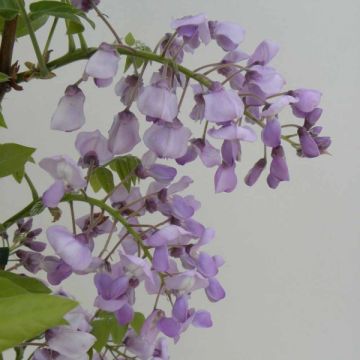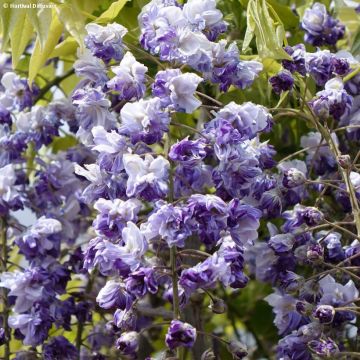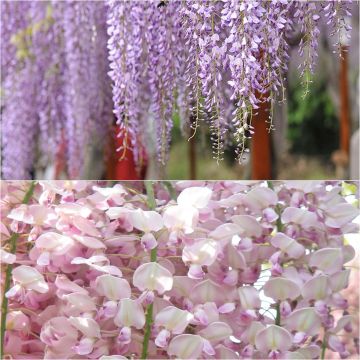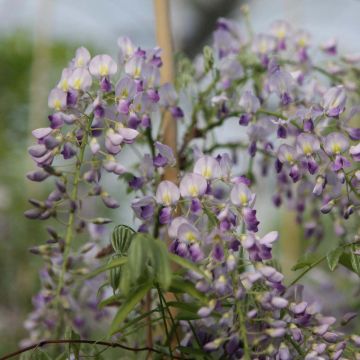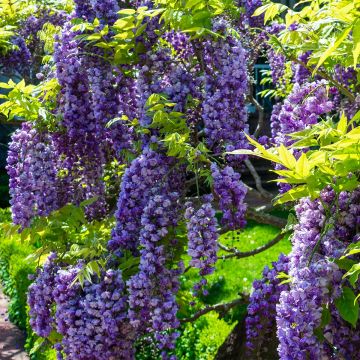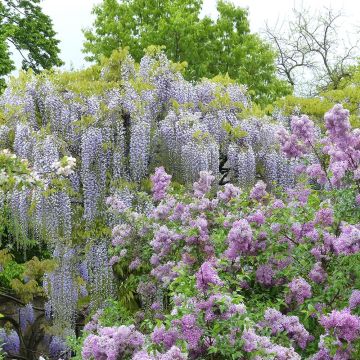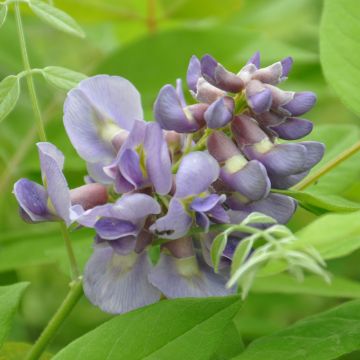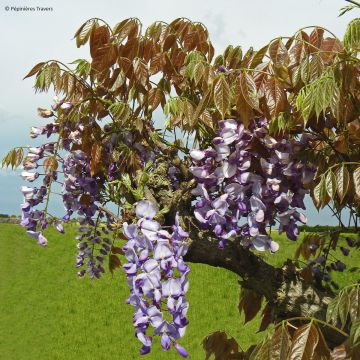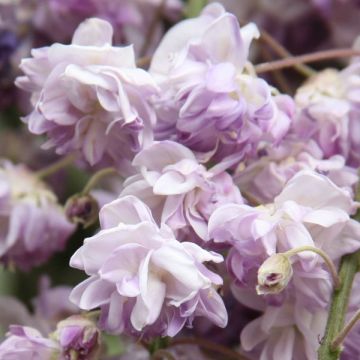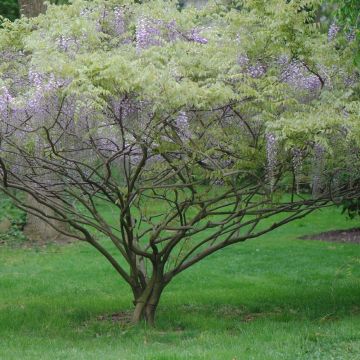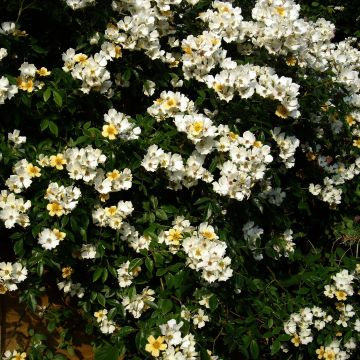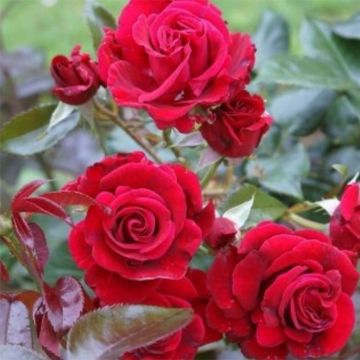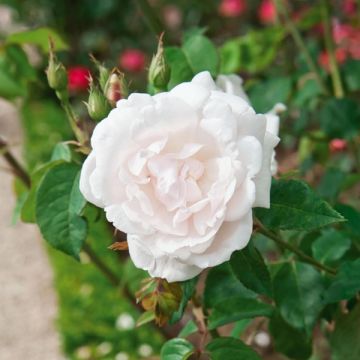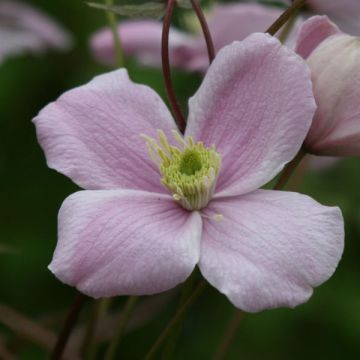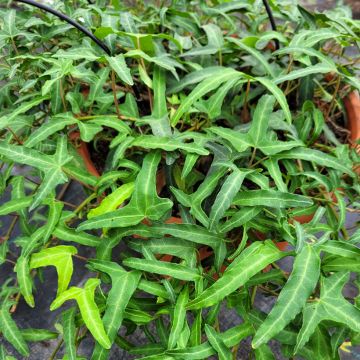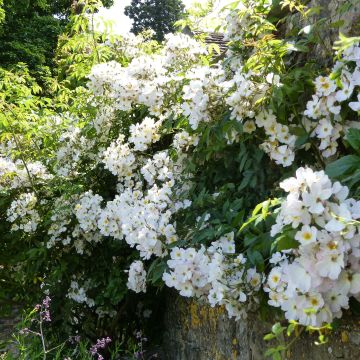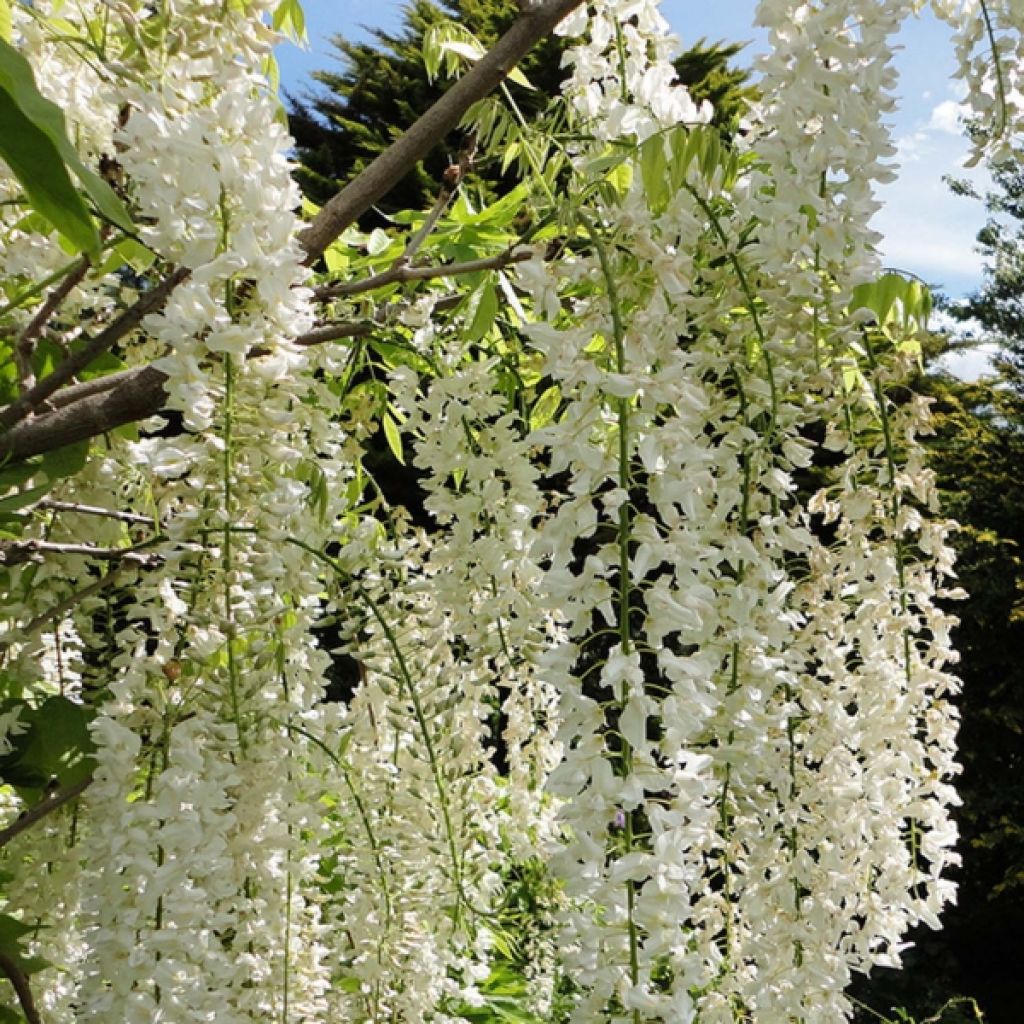

Wisteria floribunda Alba
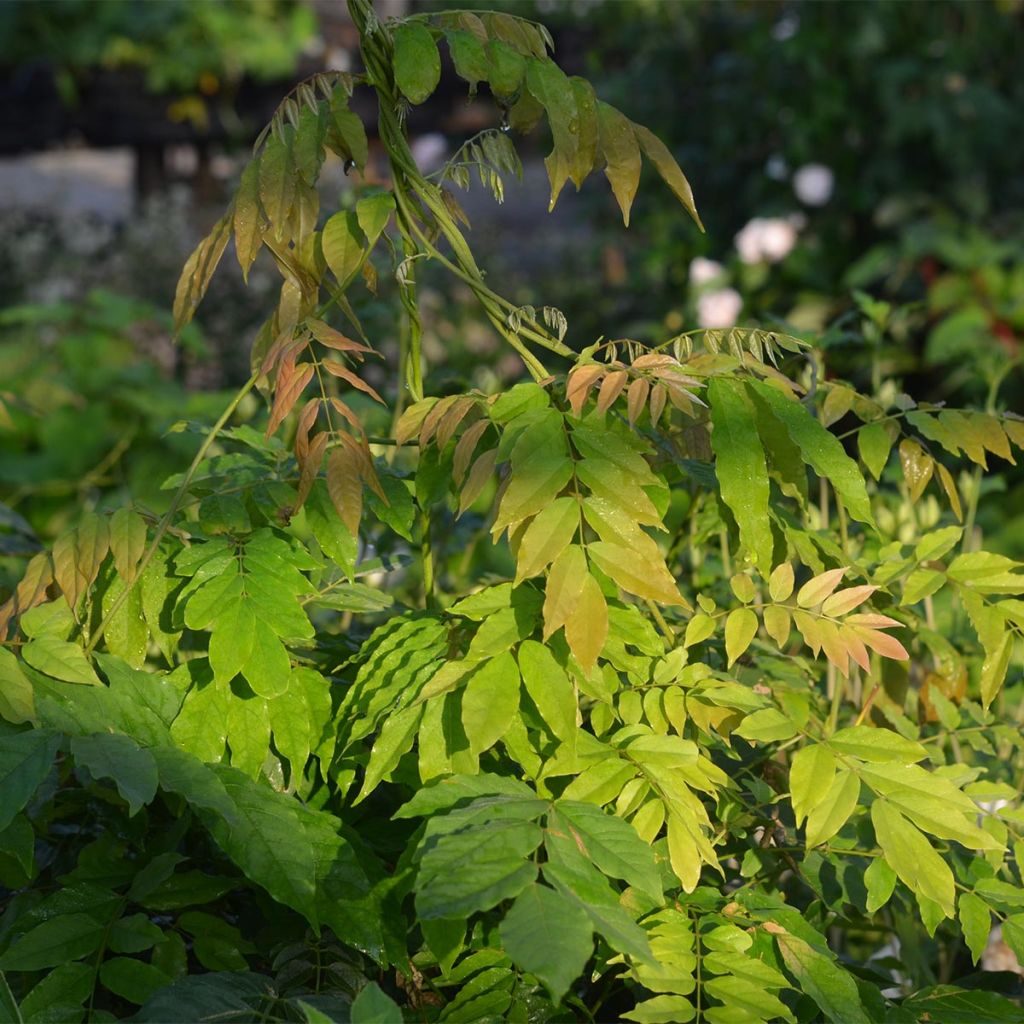

Wisteria floribunda Alba
Wisteria floribunda Alba
Wisteria floribunda Alba
White Japanese wisteria
This item cannot be shipped to the selected country
Delivery charge from €5.90
Delivery charge from €5.90
Oversize package delivery charge from €6.90
More information
Schedule delivery date,
and select date in basket
This plant carries a 6 months recovery warranty
More information
We guarantee the quality of our plants for a full growing cycle, and will replace at our expense any plant that fails to recover under normal climatic and planting conditions.
From €5.90 for pickup delivery and €6.90 for home delivery
Express home delivery from €8.90.
From €5.90 for pickup delivery and €6.90 for home delivery
Express home delivery from €8.90.
Oversize package: home delivery by special carrier from €6.90 per order..
Express home delivery from €8.90.

Does this plant fit my garden?
Set up your Plantfit profile →
Description
Wisteria floribunda 'Alba' is a climbing plant of impressive vigour. This hardy Japanese wisteria is appreciated for its generous flowering in white and fragrant clusters.
Wisteria floribunda 'Alba' is a deciduous climber. It bears medium green leaves with 12 ovate leaflets, 4 to 8cm (2 to 3in) long. The stems twine from left to right (dextrorse stems) on solid supports. In May, it bears pendulous clusters of flowers, measuring 30 to 50cm (20in) long. They are white papilionaceous flowers. The fruits, in the shape of velvety beans, measure from 10 to 15cm (4 to 6in) long.
It is one of the hardiest wisterias. It can withstand temperatures down to -20°C (-4°F). It prefers non-calcareous, deep, fertile, and well-drained soils. It appreciates sunny or partially shaded positions that are warm and sheltered from strong winds. The soil should be enriched with organic matter every year. Prune in February, when the flower buds are formed. It takes a long time for the plant to establish.
With its 10m (33ft) height, Wisteria floribunda 'Alba' is perfect for dressing walls, railings, pergolas, arbours, and porches for a romantic garden. In summer, its dense foliage will protect your south-facing patio. Take care, as wisteria branches can twist even the strongest supports.
Be aware that all parts of wisteria are toxic if ingested!
Report an error about the product description
Wisteria floribunda Alba in pictures
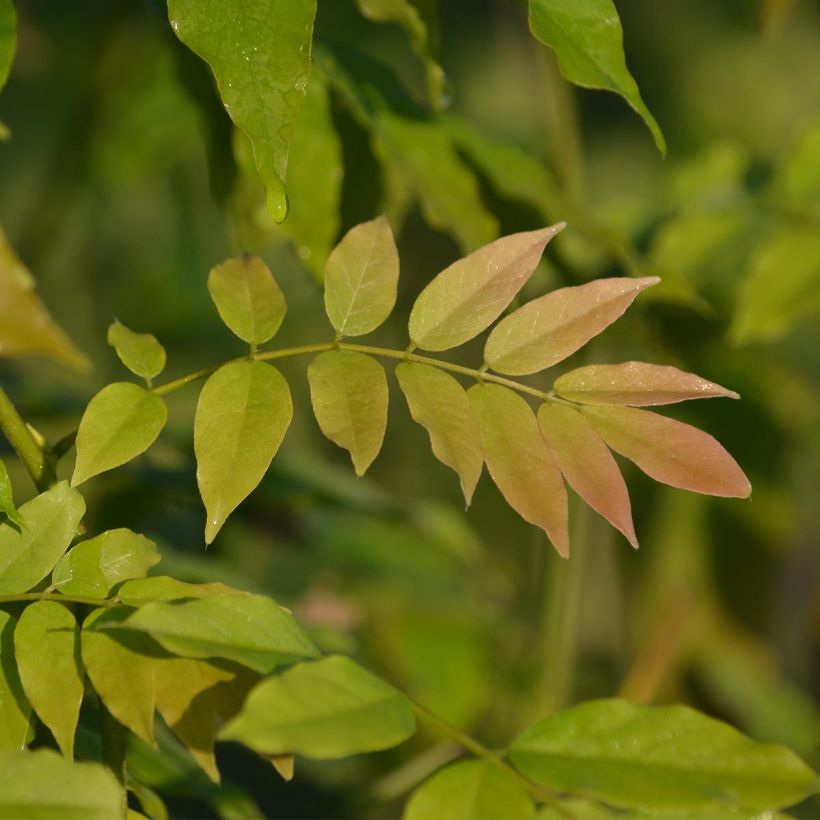

Plant habit
Flowering
Foliage
Botanical data
Wisteria
floribunda
Alba
Fabaceae
White Japanese wisteria
Cultivar or hybrid
Other Wisterias
Planting and care
Wisteria floribunda 'Alba' should be planted in autumn in fertile, deep, and well-drained soil in a sunny or semi-shaded location. Add compost. Water well after planting.
General pruning: in February, when the flower buds have formed, prune the branches without buds short (2 eyes) to aerate the plant. Do not keep more than 4 rounded flower buds on the same stem. Pruning for training a wisteria to climb a tree does not require any shaping.
Pruning for training against a wall: after planting, prune the main shoot to 75 to 90cm (30 to 35in) from the ground. In the first year, tie the lateral shoots to the support and prune the others to 2 eyes. In the first winter, prune the lateral shoots by 1/3 of their length, prune the others to 2 eyes, and trim the main shoot to 75 to 90cm (30 to 35in) above the main lateral shoot. Repeat in the following years until fully trained on the support. Once established, in late summer, prune all shoots to 15cm (6in) inside the edge of the support, leaving 4 to 6 leaves on each shoot. In mid-winter, reduce these shoots by 8 to 10cm (3 to 4in), leaving only 2 eyes.
Planting period
Intended location
Care
-
, onOrder confirmed
Reply from on Promesse de fleurs
Foolproof climbers
Haven't found what you were looking for?
Hardiness is the lowest winter temperature a plant can endure without suffering serious damage or even dying. However, hardiness is affected by location (a sheltered area, such as a patio), protection (winter cover) and soil type (hardiness is improved by well-drained soil).

Photo Sharing Terms & Conditions
In order to encourage gardeners to interact and share their experiences, Promesse de fleurs offers various media enabling content to be uploaded onto its Site - in particular via the ‘Photo sharing’ module.
The User agrees to refrain from:
- Posting any content that is illegal, prejudicial, insulting, racist, inciteful to hatred, revisionist, contrary to public decency, that infringes on privacy or on the privacy rights of third parties, in particular the publicity rights of persons and goods, intellectual property rights, or the right to privacy.
- Submitting content on behalf of a third party;
- Impersonate the identity of a third party and/or publish any personal information about a third party;
In general, the User undertakes to refrain from any unethical behaviour.
All Content (in particular text, comments, files, images, photos, videos, creative works, etc.), which may be subject to property or intellectual property rights, image or other private rights, shall remain the property of the User, subject to the limited rights granted by the terms of the licence granted by Promesse de fleurs as stated below. Users are at liberty to publish or not to publish such Content on the Site, notably via the ‘Photo Sharing’ facility, and accept that this Content shall be made public and freely accessible, notably on the Internet.
Users further acknowledge, undertake to have ,and guarantee that they hold all necessary rights and permissions to publish such material on the Site, in particular with regard to the legislation in force pertaining to any privacy, property, intellectual property, image, or contractual rights, or rights of any other nature. By publishing such Content on the Site, Users acknowledge accepting full liability as publishers of the Content within the meaning of the law, and grant Promesse de fleurs, free of charge, an inclusive, worldwide licence for the said Content for the entire duration of its publication, including all reproduction, representation, up/downloading, displaying, performing, transmission, and storage rights.
Users also grant permission for their name to be linked to the Content and accept that this link may not always be made available.
By engaging in posting material, Users consent to their Content becoming automatically accessible on the Internet, in particular on other sites and/or blogs and/or web pages of the Promesse de fleurs site, including in particular social pages and the Promesse de fleurs catalogue.
Users may secure the removal of entrusted content free of charge by issuing a simple request via our contact form.
The flowering period indicated on our website applies to countries and regions located in USDA zone 8 (France, the United Kingdom, Ireland, the Netherlands, etc.)
It will vary according to where you live:
- In zones 9 to 10 (Italy, Spain, Greece, etc.), flowering will occur about 2 to 4 weeks earlier.
- In zones 6 to 7 (Germany, Poland, Slovenia, and lower mountainous regions), flowering will be delayed by 2 to 3 weeks.
- In zone 5 (Central Europe, Scandinavia), blooming will be delayed by 3 to 5 weeks.
In temperate climates, pruning of spring-flowering shrubs (forsythia, spireas, etc.) should be done just after flowering.
Pruning of summer-flowering shrubs (Indian Lilac, Perovskia, etc.) can be done in winter or spring.
In cold regions as well as with frost-sensitive plants, avoid pruning too early when severe frosts may still occur.
The planting period indicated on our website applies to countries and regions located in USDA zone 8 (France, United Kingdom, Ireland, Netherlands).
It will vary according to where you live:
- In Mediterranean zones (Marseille, Madrid, Milan, etc.), autumn and winter are the best planting periods.
- In continental zones (Strasbourg, Munich, Vienna, etc.), delay planting by 2 to 3 weeks in spring and bring it forward by 2 to 4 weeks in autumn.
- In mountainous regions (the Alps, Pyrenees, Carpathians, etc.), it is best to plant in late spring (May-June) or late summer (August-September).
The harvesting period indicated on our website applies to countries and regions in USDA zone 8 (France, England, Ireland, the Netherlands).
In colder areas (Scandinavia, Poland, Austria...) fruit and vegetable harvests are likely to be delayed by 3-4 weeks.
In warmer areas (Italy, Spain, Greece, etc.), harvesting will probably take place earlier, depending on weather conditions.
The sowing periods indicated on our website apply to countries and regions within USDA Zone 8 (France, UK, Ireland, Netherlands).
In colder areas (Scandinavia, Poland, Austria...), delay any outdoor sowing by 3-4 weeks, or sow under glass.
In warmer climes (Italy, Spain, Greece, etc.), bring outdoor sowing forward by a few weeks.

































